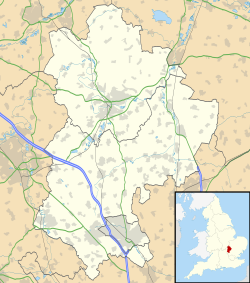| Harrowden | |
|---|---|
 The Gate public house in 2008 (Now closed and is a house) | |
Location within Bedfordshire | |
| Area | 0.093 km2 (0.036 sq mi) |
| Population | 32 |
| • Density | 344/km2 (890/sq mi) |
| OS grid reference | TL068894 |
| Civil parish | |
| Unitary authority | |
| Ceremonial county | |
| Region | |
| Country | England |
| Sovereign state | United Kingdom |
| Post town | BEDFORD |
| Postcode district | MK42 |
| Dialling code | 01234 |
| Police | Bedfordshire |
| Fire | Bedfordshire and Luton |
| Ambulance | East of England |
| UK Parliament | |
Harrowden is a one-street hamlet in the civil parish of Shortstown, Bedfordshire, England.
Contents
The street runs from east to west parallel and to the south of the A421 Bedford Southern Bypass, and 200 metres to the north of the village of Shortstown. There is a path at the west side of Harrowden named Bumpy Lane that leads to Abbey Fields. Like Shortstown, Harrowden is in the Eastcotts parish, of the Borough of Bedford.
